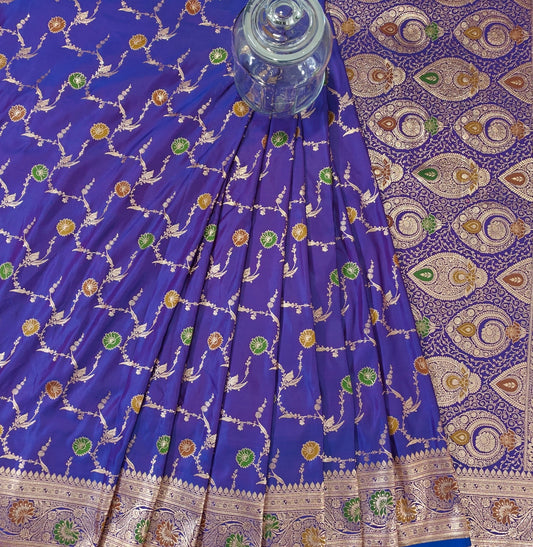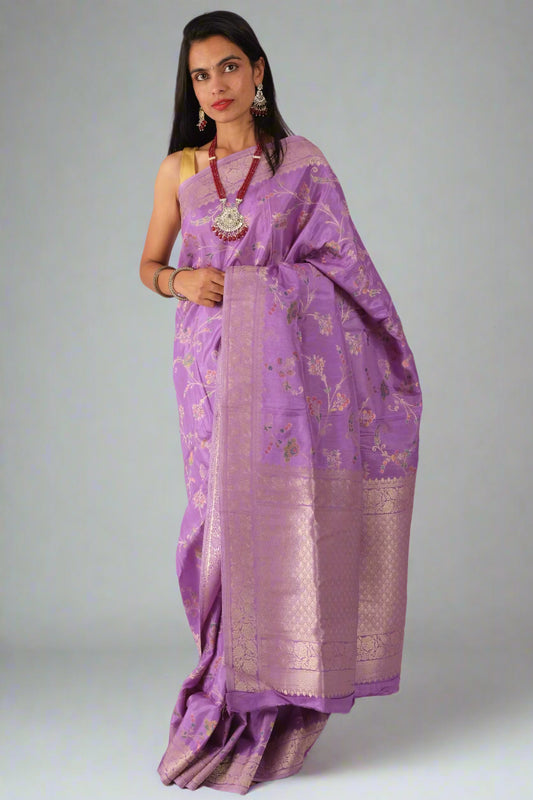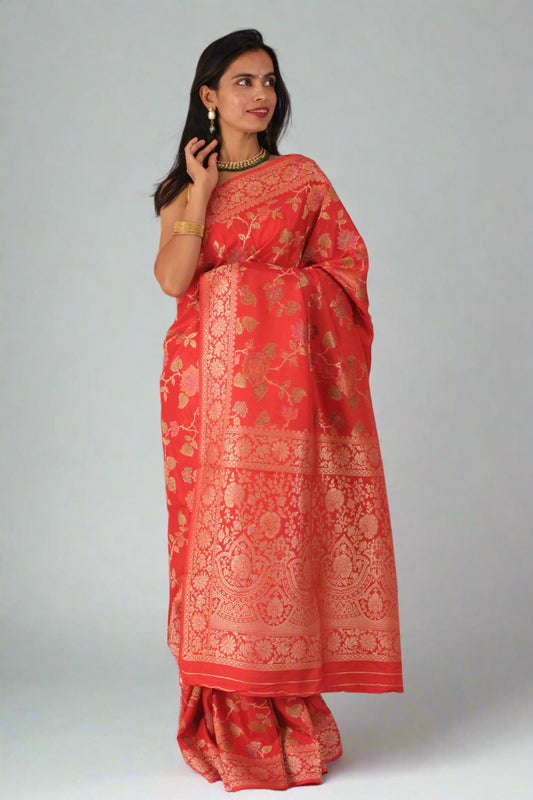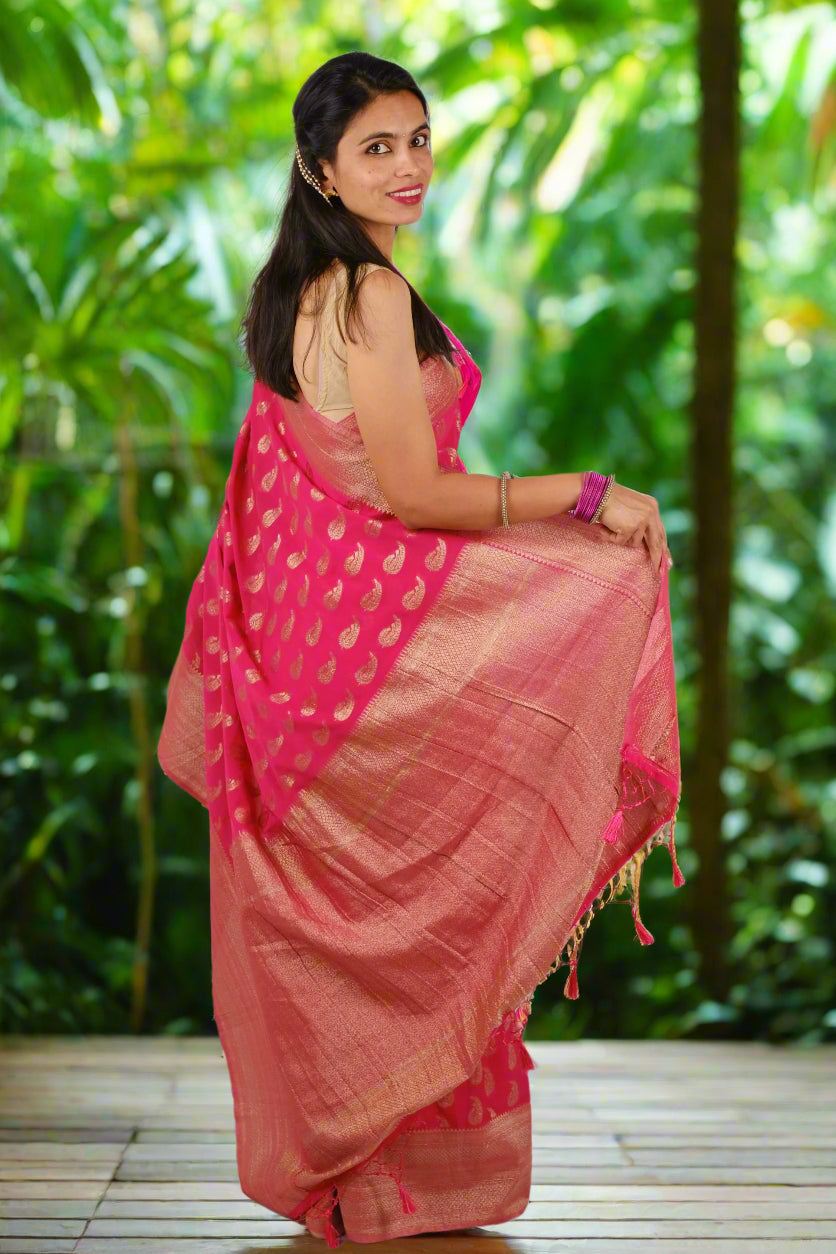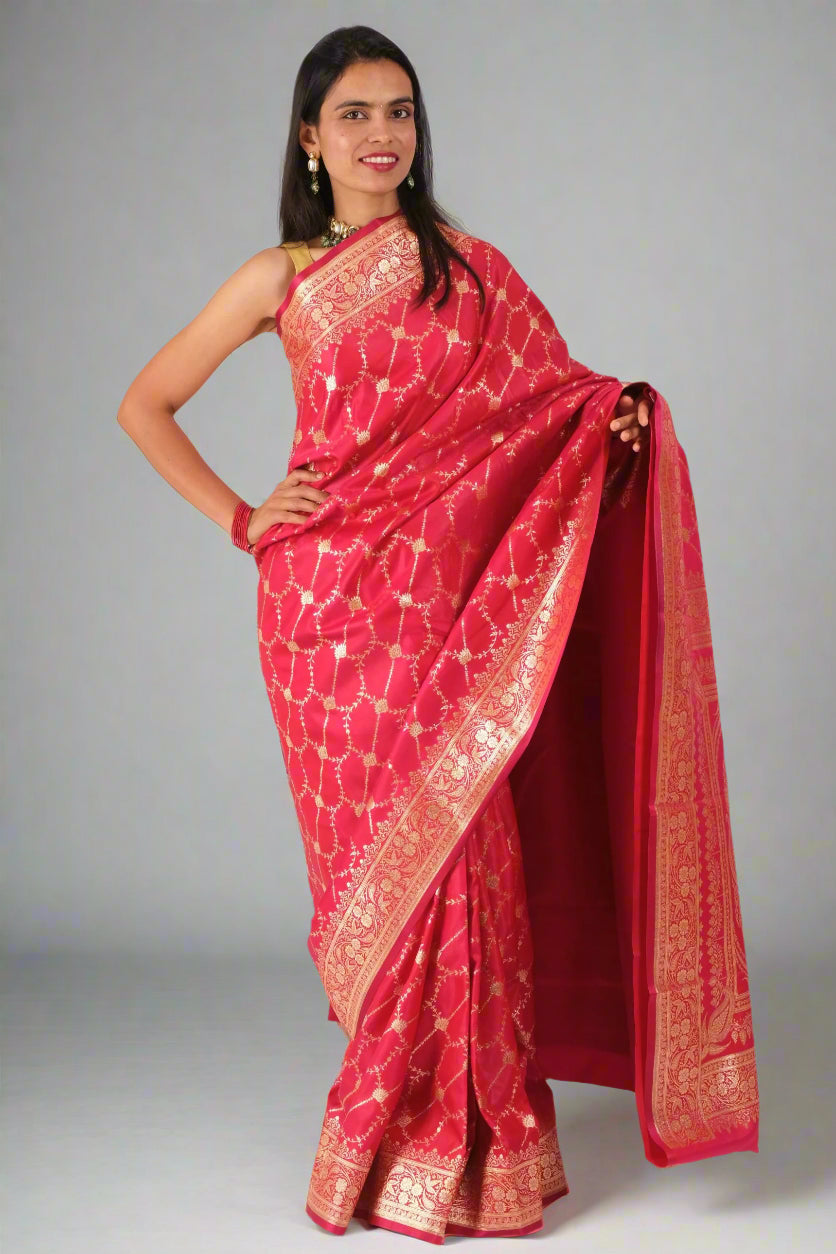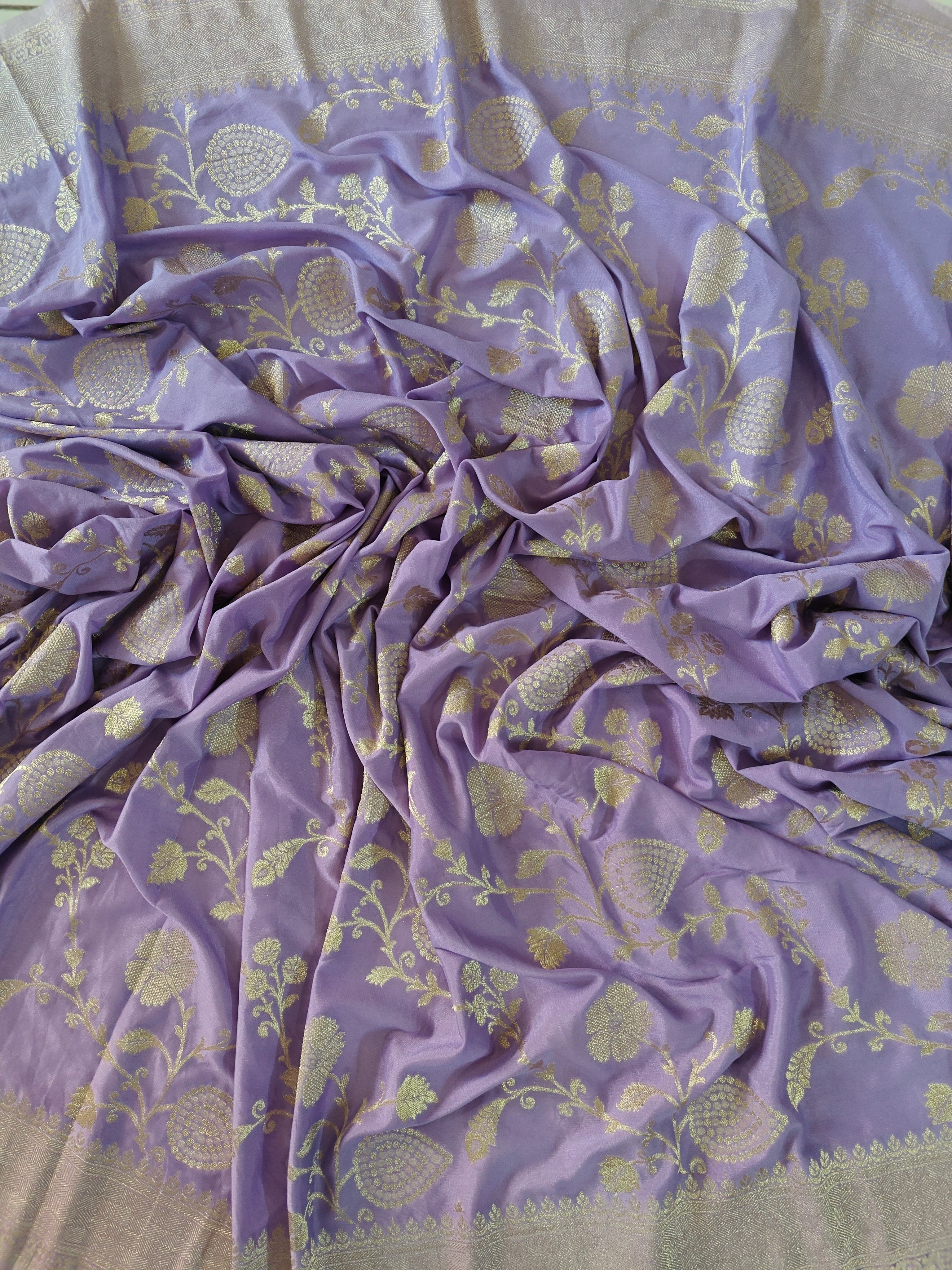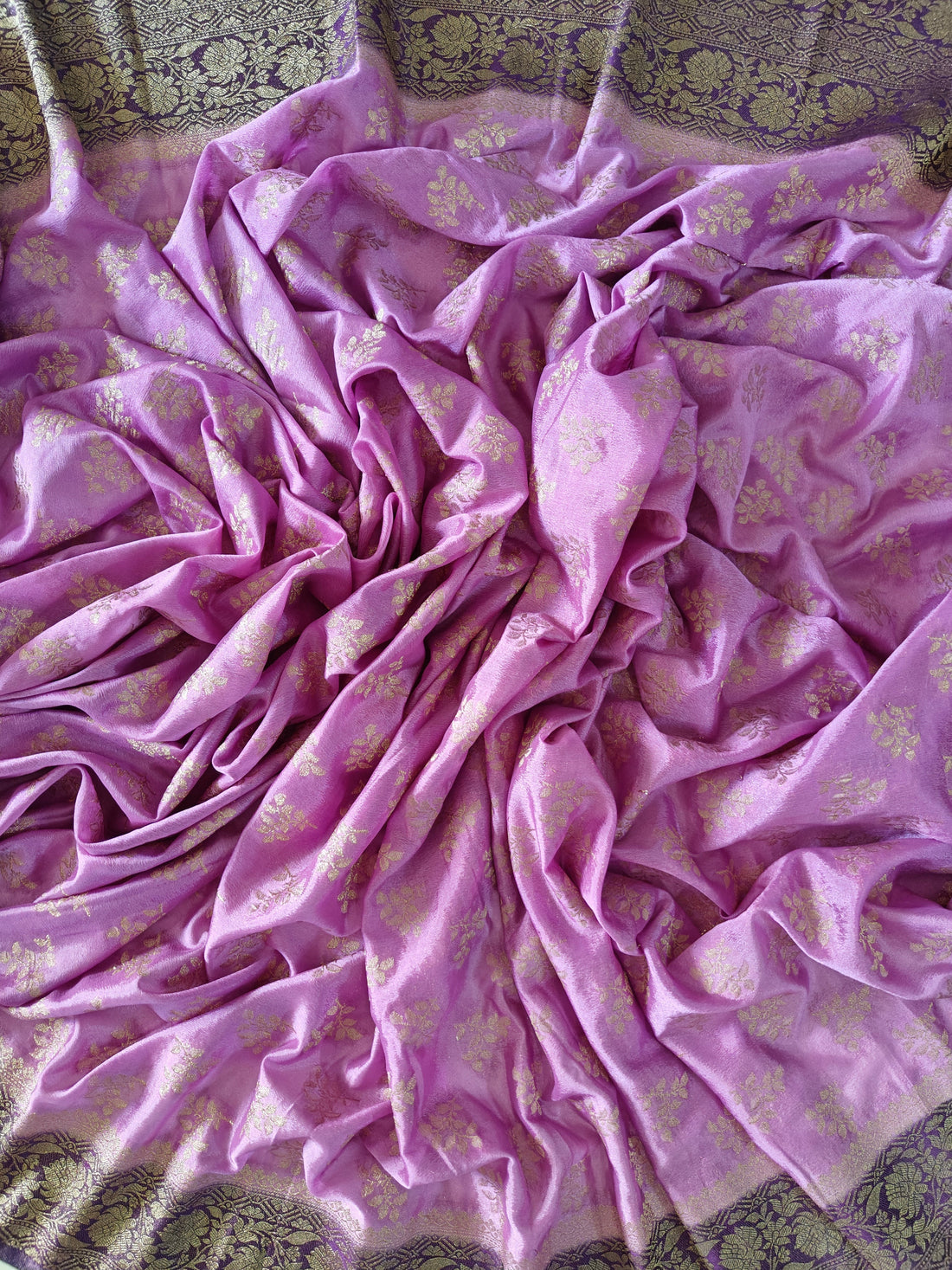
The History of Banarasi Sarees: A Journey Through Time
The Banarasi saree is synonymous with elegance, tradition, and unparalleled craftsmanship. Originating from the holy city of Varanasi (also known as Banaras), this iconic garment is steeped in history, culture, and artistry. The story of the Banarasi saree is as intricate as the motifs woven into its luxurious fabric. At Silken Saga, we honor this legacy by offering authentic Banarasi sarees that reflect the rich heritage of India.
The Origins of Banarasi Sarees
The history of Banarasi sarees can be traced back to ancient times, with references found in texts as old as the Mahabharata. However, it was during the Mughal era that Banarasi sarees gained prominence.
The Mughals introduced Persian motifs and weaving techniques to India, and Varanasi became a hub for skilled artisans who combined traditional Indian designs with Persian influences. This fusion gave rise to the intricate patterns and zari (gold and silver thread) work that define Banarasi sarees today.
How Banarasi Sarees Came to Banaras
Banaras, located on the banks of the Ganges, has been a center of trade, culture, and spirituality for centuries. The city’s access to high-quality silk and skilled weavers made it an ideal location for the production of these exquisite sarees.
During the Mughal period, Emperor Akbar’s patronage of the arts encouraged the flourishing of silk weaving in Banaras. Artisans from across the empire migrated to the city, bringing with them unique skills and designs. Over time, Banarasi sarees became a symbol of opulence and royal elegance, often commissioned by the nobility.
Evolution Over Time
The Banarasi saree has evolved significantly over the centuries, adapting to changing tastes and trends while retaining its essence:
- Mughal Era: Intricate floral and foliate patterns, inspired by Persian art, became a hallmark of Banarasi sarees.
- Colonial Period: Despite challenges posed by British industrialization, Banarasi weavers preserved their craft, often combining traditional motifs with contemporary elements.
- Post-Independence: Banarasi sarees gained national recognition as a symbol of Indian heritage. They became a staple at weddings and festivals.
- Modern Times: Today, Banarasi sarees incorporate modern designs, lighter fabrics, and a variety of colors, catering to a global audience while staying true to their roots.
Types of Banarasi Sarees
Over the years, the craft has diversified, resulting in different types of Banarasi sarees:
- Pure Silk (Katan): Known for its luxurious texture and durability.
- Shattir: Lightweight and ideal for contemporary designs.
- Organza with Zari Work: Delicate and perfect for festive occasions.
- Tanchoi: Features intricate patterns without zari, emphasizing elegance.
- Jangla: Characterized by heavy, elaborate designs.
The Cultural Significance of Banarasi Sarees
Banarasi sarees are more than just garments; they are a testament to India’s rich heritage. These sarees are often passed down as heirlooms, symbolizing continuity and tradition. They are an essential part of Indian weddings, especially in bridal trousseaus, where they represent grace, prosperity, and timeless beauty.
Preserving the Art of Banarasi Weaving
The art of Banarasi weaving faces challenges such as competition from machine-made textiles and dwindling numbers of skilled artisans. However, initiatives by the Indian government and organizations like Silken Saga aim to preserve and promote this heritage by supporting local weavers and ensuring fair trade practices.
Why Choose Banarasi Sarees from Silken Saga?
At Silken Saga, we offer:
- Authentic Craftsmanship: Sourced directly from artisans in Varanasi.
- Unique Designs: A blend of traditional and contemporary patterns.
- Quality Assurance: Made with the finest silk and zari.

